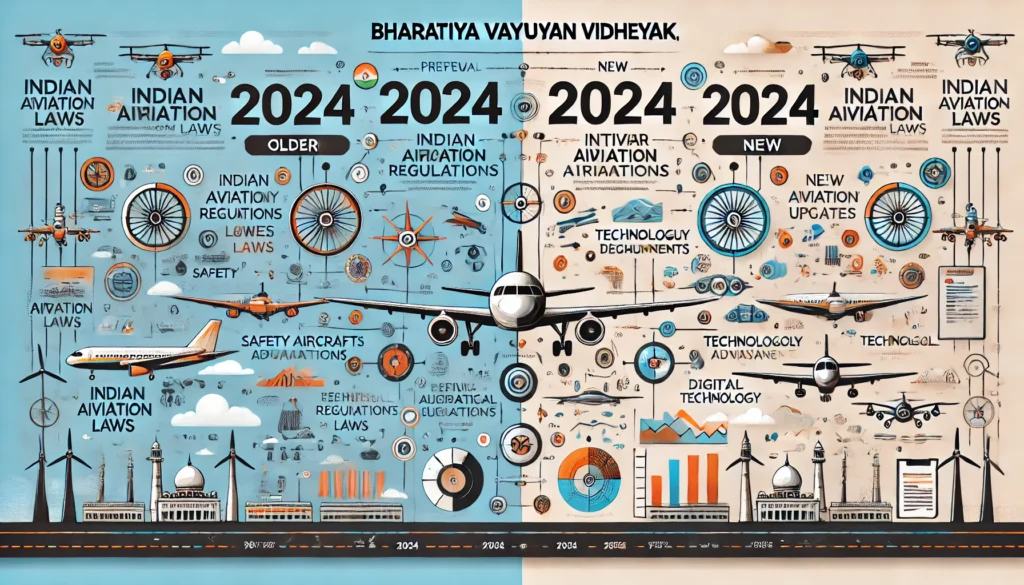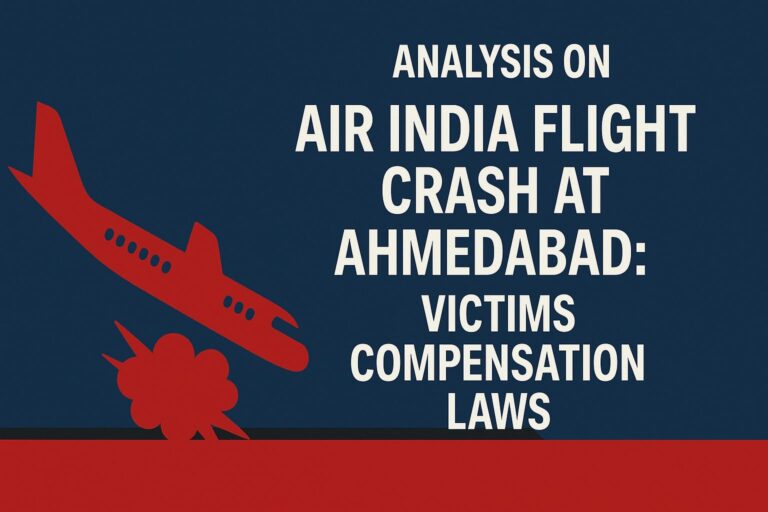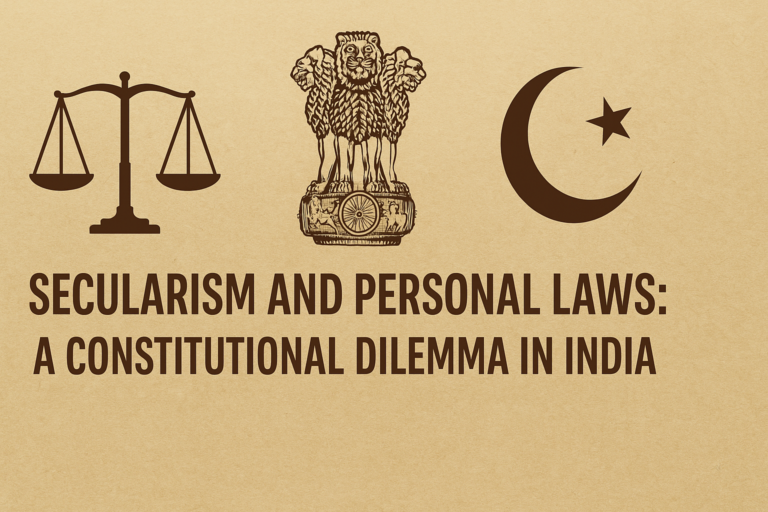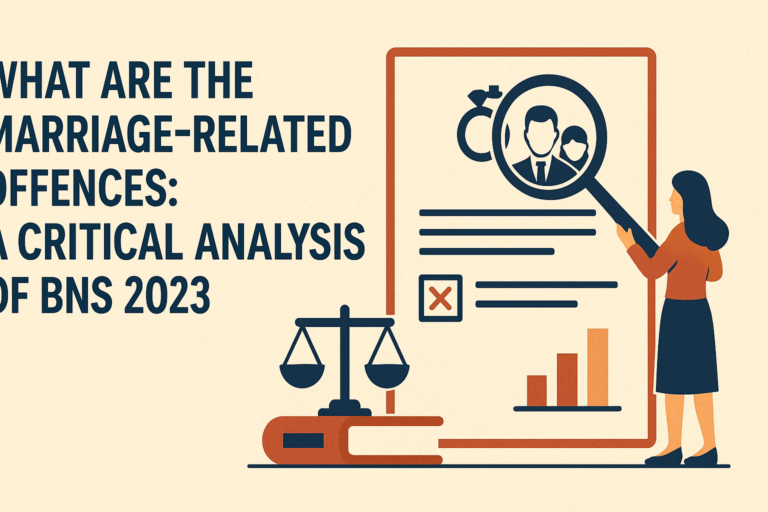
Sumit Kumar, Author
Sumit Kumar currently in his final year at Law College Dehradun, Uttaranchal University, Read More
Introduction
The Bharatiya Vayuyan Vidheyak, 2024 (BVV 2024), marks a pivotal development in the evolution of India’s aviation laws, replacing the nearly century-old Aircraft Act, 1934. As the Indian aviation sector witnesses unprecedented growth and technological advancements, the need for a comprehensive and modern regulatory framework has become indispensable. The BVV 2024 addresses the limitations of its predecessor, reflecting contemporary realities, global best practices, and the expanding scope of India’s aviation activities, both domestically and internationally.
This transformative legislation broadens the scope of aviation regulation, formalizes key regulatory authorities, and strengthens the Central Government’s powers to ensure effective oversight. Moreover, it introduces robust compensation mechanisms for affected parties and enforces stricter penalties for non-compliance, addressing gaps in the earlier law. By incorporating provisions for emerging technologies such as drones and unmanned aerial vehicles (UAVs), the Act positions India to lead in innovation while maintaining high safety and security standards.
The BVV 2024 not only modernizes the regulatory framework but also aligns it with international conventions and standards, fostering growth, innovation, and global competitiveness. This paper delves into the key features of the BVV 2024, highlighting its significance in shaping a resilient and future-ready aviation sector for India.
Historical Background
Aircraft Act, 1934: The Aircraft Act was enacted during the British colonial era, primarily to regulate the burgeoning aviation sector. It came into force when civil aviation was in its infancy in India, with limited air routes and basic infrastructure. Its provisions were influenced by the International Air Navigation Convention of 1919 and aimed to provide a legal framework for aircraft operations, licensing, and safety.
The Act reflected the technological and operational realities of its time, with a focus on piston-engine aircraft, manual navigation systems, and rudimentary air traffic control. Over the decades, it was amended multiple times but struggled to keep pace with rapid advancements in aviation technology, globalization, and the growth of India’s aviation industry.
Bharatiya Vayuyan Vidheyak, 2024: This legislation emerges in a vastly different context, where India is one of the fastest-growing aviation markets globally. The modern aviation landscape is characterized by jet propulsion, satellite navigation, drones, and urban air mobility systems. The Vidheyak reflects India’s aspirations to align its aviation sector with international standards, leverage advanced technologies, and address contemporary challenges such as cybersecurity, environmental sustainability, and passenger-centric services. It signifies a shift towards proactive governance and modernization to ensure competitiveness in the global aviation market.
Need of this Act
The Bharatiya Vayuyan Vidheyak, 2024 (BVV 2024), was necessitated by the dynamic evolution of the aviation industry and the inadequacies of the Aircraft Act, 1934, in addressing contemporary challenges. The 1934 Act, crafted in a bygone era, was unable to accommodate the rapid technological advancements, globalization of air travel, and increasing complexities of modern aviation. India’s aviation sector has experienced exponential growth, with rising air traffic, expanding international operations, and the proliferation of new technologies like drones and unmanned aerial vehicles (UAVs), which remained unregulated under the outdated law. Moreover, the old Act lacked alignment with international conventions like the Chicago Convention, hindering India’s ability to maintain seamless global cooperation and compliance.
Key regulatory authorities, such as the Directorate General of Civil Aviation (DGCA) and the Bureau of Civil Aviation Security (BCAS), operated without statutory backing under the 1934 framework, limiting their capacity to enforce safety, security, and compliance effectively. The penalties prescribed were insufficient to deter violations, and the absence of compensation mechanisms left affected parties with no clear recourse for grievances. Additionally, the Act did not adequately address emerging security threats or provide the government with structured powers for emergency responses. The need for a cohesive, forward-looking framework became evident to eliminate legal redundancies, modernize enforcement mechanisms, and ensure the sector’s alignment with global standards.
The BVV 2024 provides a robust legal foundation that reflects the demands of contemporary aviation, balancing regulatory authority with fairness and efficiency. By addressing the shortcomings of its predecessor, it ensures India’s aviation sector remains competitive, safe, and well-prepared to meet the challenges of a rapidly evolving global landscape.
Comparative Study
Expanded Scope and Updated Definitions
The Bharatiya Vayuyan Vidheyak, 2024 (BVV 2024) significantly broadens the scope of India’s aviation laws compared to the Aircraft Act, 1934. While the older Act primarily addressed civil aviation operations within Indian territory, the BVV 2024 extends its application to Indian-registered aircraft operating globally, foreign aircraft flying in Indian airspace, and Indian citizens involved in aviation activities outside India. This ensures comprehensive coverage, reflecting the growing global footprint of Indian aviation. Additionally, Section 2 modernizes definitions, incorporating terms like “aerodrome reference point,” “design,” and “maintenance,” which align with contemporary aviation standards. The inclusion of drones and unmanned aerial vehicles (UAVs) into the regulatory framework addresses a significant gap in the 1934 Act, which did not foresee technological advancements in aviation. By clearly defining these terms, the BVV 2024 eliminates ambiguities and provides a robust legal foundation to regulate modern and emerging technologies.
Formalization of Regulatory Authorities
The BVV 2024 formalizes the roles of key regulatory authorities, providing them with statutory backing and well-defined responsibilities. Sections 3 and 4 establish the Directorate General of Civil Aviation (DGCA) as a central authority for ensuring airworthiness, issuing licenses, and overseeing operational safety. Unlike the 1934 Act, where the DGCA’s role was not explicitly defined, the new Act grants it powers to issue binding safety directives, inspect aviation facilities, and enforce compliance. Similarly, Sections 5 and 6 codify the Bureau of Civil Aviation Security (BCAS), which is responsible for safeguarding civil aviation against unlawful interference. In the previous Act, the BCAS functioned without a statutory mandate, often relying on administrative orders. Section 7 introduces the Aircraft Accidents Investigation Bureau (AAIB) as an independent body to investigate accidents and incidents, following international standards. By formalizing these bodies, the BVV 2024 ensures accountability, transparency, and alignment with global best practices.
Enhanced Powers of the Central Government
The BVV 2024 provides a clearer and more structured framework for the Central Government’s regulatory powers, addressing the inconsistencies of the 1934 Act. Sections 8 to 21 empower the government to make rules in critical areas, such as aircraft design, maintenance, and public safety, while aligning domestic aviation laws with international conventions like the Chicago Convention. The government can issue temporary rules during emergencies, such as public health crises or security threats, ensuring swift action. Provisions for regulating air routes, restricting construction near aerodromes, and detaining unsafe aircraft further strengthen the government’s oversight capabilities. Compared to the vague and broad powers under the Aircraft Act, 1934, these structured provisions enhance efficiency and operational clarity, enabling the government to address both routine and crisis situations effectively.
Compensation Mechanisms for Affected Parties
One of the most significant advancements in the BVV 2024 is the introduction of a comprehensive framework for compensation, addressing a glaring omission in the Aircraft Act, 1934. Sections 22 to 24 outline the process for determining and awarding compensation for losses caused by government actions, such as demolitions near aerodromes for safety purposes. This framework includes provisions for arbitration and appeals, ensuring timely and fair resolution of disputes. Under the 1934 Act, affected parties were often left to pursue lengthy and costly litigation, with no specific mechanism to address grievances. By establishing clear rules for compensation, the BVV 2024 safeguards the rights of stakeholders, balancing regulatory authority with fairness and justice.
Stronger Penalties and Enforcement Mechanisms
The BVV 2024 introduces a robust enforcement framework, addressing the limitations of the 1934 Act, which had minimal punitive measures. Sections 25 to 33 prescribe stringent penalties for violations, including fines of up to ₹1 crore and imprisonment for serious offenses like endangering safety or violating security directives. Regulatory bodies like the DGCA and BCAS are granted expanded powers to inspect facilities, suspend licenses, and prosecute offenders, ensuring stricter compliance. The Act also allows for the compounding of minor offenses, reducing the burden on courts while maintaining accountability. These measures represent a significant improvement over the 1934 Act, where penalties were often insufficient to deter violations, undermining regulatory effectiveness.
Miscellaneous Provisions and Legal Transition
The BVV 2024 consolidates and modernizes miscellaneous provisions, addressing areas previously overlooked or inadequately covered in the Aircraft Act, 1934. Sections 34 to 43 include rules for managing unclaimed property at aerodromes, aligning with international patent laws for aviation technologies, and barring nuisance-related suits for routine aircraft operations. These provisions ensure legal clarity and consistency across all aspects of aviation regulation. Additionally, Section 43 formally repeals the Aircraft Act, 1934, while safeguarding actions taken under it, ensuring a smooth legal transition. The consolidation of these provisions into a single framework eliminates redundancies and enhances the overall efficiency of aviation law in India.
Conclusion
The Bharatiya Vayuyan Vidheyak, 2024 represents a transformative shift in India’s aviation regulation, addressing the shortcomings of the Aircraft Act, 1934 and introducing a forward-looking framework. By expanding its scope, formalizing regulatory bodies, clarifying government powers, and strengthening enforcement mechanisms, the new Act aligns India’s aviation sector with global standards and prepares it to meet the demands of a rapidly evolving industry. Through its emphasis on clarity, fairness, and efficiency, the BVV 2024 not only ensures safety and security but also fosters growth and innovation, positioning India as a global aviation leader.







